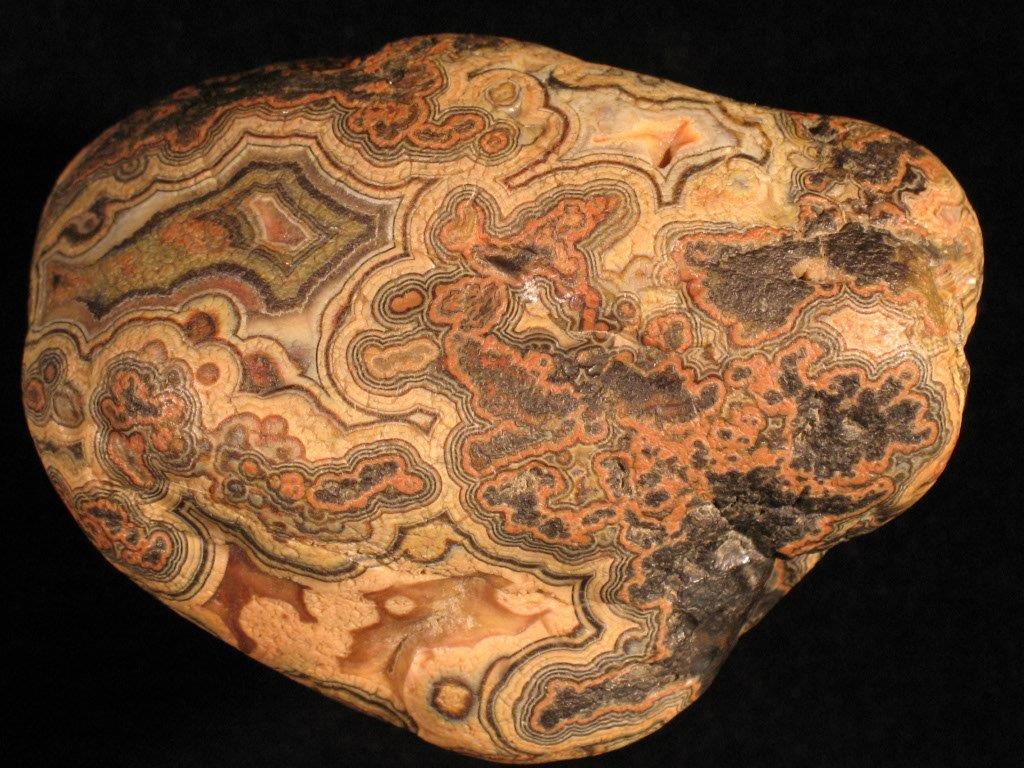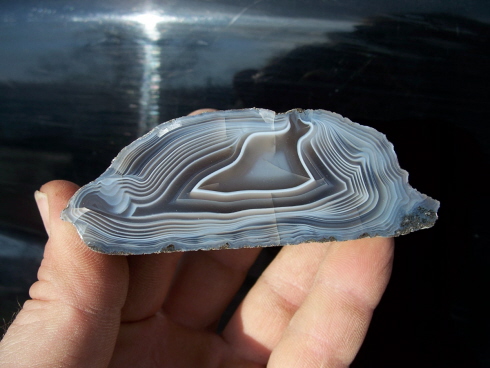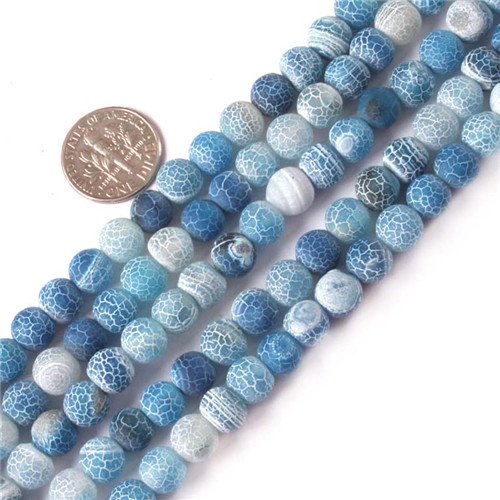We had fun selling and buying specimens at the gem show. If you missed it, here are some of the things you can expect to find at a show.

An overview of the whole show. Photo by Stephanie Reed

This year we sold books about rocks and where to find them, including the highly desired Gemstones of North America by John Sinkankas.

Mark selling minerals.

President Martin and Webmistress Stephanie looking at an aquamarine. Photo by David Reed

This jar of tumbled chips of Lake Superior agates was part of a kit for making a gem tree, sold by the Show-Me Rockhounds. Photo by Stephanie Reed

Polished spheres made of minerals from Dave’s Rocks and Carvings (Hamburg, MI). I see rose quartz, tiger’s eye, sodalite, and snowflake obsidian. Can you name all the minerals?

Mineral specimens for sale from Dave’s Rocks and Carvings (Hamburg, MI) Photo by David Reed

Gem shows always have lots of jewelry for sale, usually organized by mineral. This is an entire box full of rings made with blue larimar sold by Manichia LLC (Kansas City, MO). Blue larimar is a type of volcanic pectolite found in the Dominican Republic.

Glass beads for sale at Park Design (St. Joseph, MO). You can even watch the beads being made. They can also be found at the Three Trails Trading Post in Independence, MO.




























